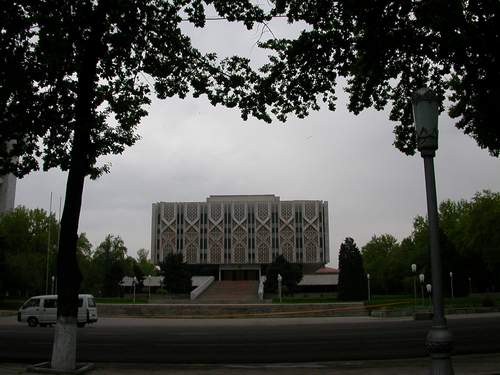State museum of history of Uzbekistan

Uzbekistan is a country with an ancient civilization. Archeological finds date back to the lower Paleolithic era, up to five thousand to million years BC.
The land is situated in the center of Asia, at the heart of the great Silk Route. In ancient times it was known as Bactria, Mouverannakr and later, Turkestan. At one time there flourished the powerful Kushan Empire and Seleucid kingdom, Parfian kingdom and Khoresmian khanate, Samanids and Timurids, the Bukhara emirate and Kokand khanate. The cities of Bukhara, Samarqand and Khiva were main centers of trade and enlightenment on the Silk Route, connecting western and oriental civilizations. This is the land where religions such as Zoroastrianism, Buddhism, Judaism, Christianity and Islam overlapped.
All this can be explored in the Museum of the History of Uzbekistan.
The museum is one of the oldest in Central Asia, founded on 12 July 1876 as the People’s Museum of Turkestan. Thanks to the efforts of social organizations and private groups, the museum was soon filled with exhibits. Besides the permanent exhibitions abroad, including shows in Paris (1900) and Milan (1906). The museum inspired other museums to open in Samarqand (1896) and Ferghana (1899). From February 1919it became known as the General Museum of Turkestan (later the General Central Asian Museum).
The heart of the building is the fourteen meter high entrance hall. A wide ramp from the front square leads into the hall on the second floor. Solar-controlled enclosures or pandjara tiled with gazgan rose marble decorate the facade of the building in a simple geometrical pattern. The main doors are made of wood and expertly carved gyanch tiles and the decoration on the fountain pool complements the tiles on the building. The architecture successfully creates a feeling of lightness in the construction helped by the glass walls on the first floor which appear almost invisible.
The museum contains over 250,000 exhibits, including important numismatic, archeological and ethnographical antiquities. These reflect the culture and traditions of the people, the landscape of the country, the establishment of a state, and the formation of the Uzbek ethnos.
Unique exhibits include:
– Very early human remains from the Selyungur cave (1.5 million years BC),Teshiktash and Obirakhmat;
– A stone statue depicting two snakes (Fergana valley, 2,000 BC);
– The Triad, a stone sculpture of Buddha with monarchs and other items of art and Bhuffian temple-bronzer complex of Fayaztepa of 1-3rd centuries, near Termez;
– Alabaster ornament from the Governor’s palace in Bukhara 6-8th centuries;
– Fragments of wall art of 7-8th centuries, found at Afrosiab;
– A 10th century carved pillar from the village of Oburdon.
The most historically important items are the numismatic collections. There are coins minted in a broad chronological range from the 5th century BC right up to the 19th century AD; coins of the ancient historical and cultural regions and dynasties including the Akhemenids, Alexander the Great, Seleucids, Greek-Bactrian kings, Kushan, Khorezm, Sogda, and Chacha; also a number of coins from medieval dynasties such as the Takhirids, Samanids, Karakhanids, Chingizids, Timurids, and the Bukhara and Khiva khanates.
The ethnographic collections of the museum include original exhibits of high artistic, historical and cultural value mostly personal items, items from the home, and handicrafts.
There are Zoroastrian ossuaries, Sogdian and Bactrian wall paintings, Buddhist sculptures, Khalchayan ceramics and exhibits from the Timurid period.
The museum allows visitors to observe how civilizations developed in Central Asia from the time of the Stone Age and the first settlements on Uzbek territory to today. Many exhibits are world famous, including a large bronze Saksonian cauldron of the 4th or 5th century BC decorated with animal statuettes, or a wonderful 1st century sculpture of Buddha found in the Surkhandarya region. The museum has a very good collection of ancient ceramic and textiles and unique archeological, ethnographic and numismatic collections; it also has a library of documents, historical antiques and artworks.
The museum is a permanent member of international exhibitions organized abroad (in the USA, Germany, Japan and elsewhere).
In 2003 a new exhibition opened, focusing on the history of Uzbekistan from ancient times till nowadays.
The souvenir shop sells traditional artworks of Uzbekistan including ceramics, miniatures, fabrics, palaces and handicrafts.
Central Asia DISCOVERY # 25